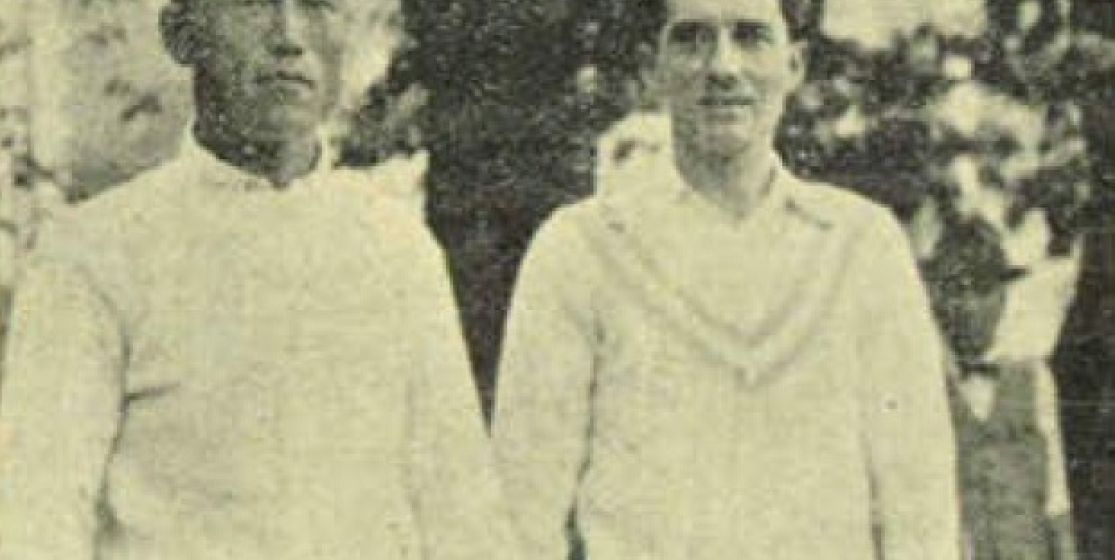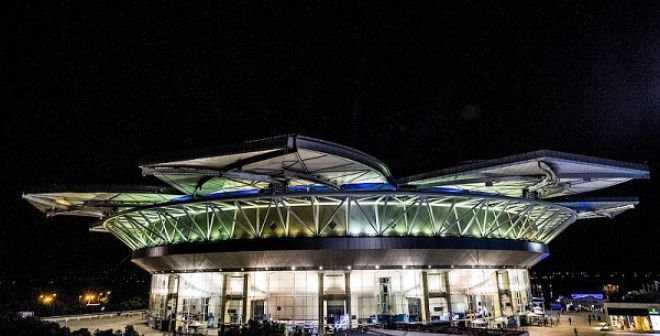80 years ago, Jiro Sato died at the age of 26 by jumping off the ship that was taking him to play a round of Davis Cup. This suicide made a deep impression at the time, as the victim was World number three and remains to this day the best Japanese in the history of the sport. Story of this tragic night of April 1934.
Thursday 5th of April 1934, 11.30pm. Night has fallen for quite some time now on the ship N.Y.K. Hakone Maru which had left a few hours earlier from Singapore and headed to the port of Penang in Malaysia, about 500 miles north. The weather was damp in these tropical latitudes. Difficult to sleep early in such conditions, so the passengers were hanging out in public areas after dinner. Amongst them, the Japanese Davis Cup team, who was had just embarked for a very long journey towards Eastbourne, England, where they were scheduled to play an initial round against Australia. It was a rematch of the Davis Cup 1933 semi-final, which saw Australia win 3-2 after being down 0-2. The fifth decisive match had been lost to the general surprise by Jiro Sato, the world number three at the time, who had broke down mentally under pressure. On the deck of the N.Y.K. Hakone Maru in the late evening of this 5th of April, Jiro Sato was conspicuous by his absence. A few hours earlier he had asked for his dinner to be delivered in his cabin. His roommate was Jiro Yamagishi, substitute player of the Japanese team. At 11.30pm, he decided to go to bed and found the cabin empty. Maybe Jiro Sato simply went out to stretch his legs? This absence yet quickly started to worry him when he saw on the desk two freshly written letters, made prominent. These were letters of farewell.
The first one was addressed to the captain of the ship, apologizing for any inconvenience caused by his suicide. The second explained his shame for not been able to live up to the hopes placed in him and asking his teammates to do their best to beat Australia and defend the honour of Japan. Yamagishi alerted the authorities on board. For 7 hours, staff and passengers looked for Jiro Sato, on the ship - perhaps he had not jumped yet? - And at sea. These searches were in vain, unless we consider that they allowed to notice that two heavy iron crowbars and a jump rope were missing. Jiro Sato probably used them to sink quickly, after jumping into the sea, while the ship was crossing the Strait of Malacca. His body was never found.
He had just got engaged and wanted to resume his studies
In a telegram sent by the captain, Japan was quickly informed of his disappearance. The emotion was tremendous. Jiro Sato was and remains the greatest national tennis champion, a sport that became popular in the country from the 1920s. In 1931, for his debut on the international tour, the Japanese prodigy reached the semi-final of the French Open. The following year, he made it to the semi-finals in Australia and at Wimbledon. The year 1933 was his best, with a wonderful fortnight at Wimbledon: semi-finals in singles and final in doubles. Then came this damned semi-final of Davis Cup lost against Australia. For once, Sato didn't live up to the expectations placed in him, and this, his country didn't forgive it. Back home, he was shouted down. From national hero, he became the loser who failed his country. The player had a very hard time dealing with the situation, especially as he began to lose interest in tennis. He considered resuming his studies in economics, left behind to focus on sport. He also wanted to get married and start a family. He had recently got engaged to his doubles partner, his compatriot Sanaye Okada. After the exhausting American tour of autumn 1933, he asked the Japanese tennis federation to take a break in his career. They refused, arguing that the player had a duty to use his talent racquet in hand in the service of the country.
It was then a particularly depressed Jiro Sato who boarded the Hakone Maru in Singapore in early April 1934. Before the departure of ship, the young man complained of severe stomach pains and asked to be excused from the trip to England. A doctor examined him and diagnosed a case of neurasthenia. Regardless, he had to embark this journey to England and accompany the Davis Cup team, even if he didn't want to. But he couldn't. So in a desperate moment, he chose to kill himself. Jiro Sato drowned. Drowned in despair. Upon hearing of his death, many paid tribute to him. A famous rival, Fred Perry, even said: “It was one of the most charming men I have ever met.”






